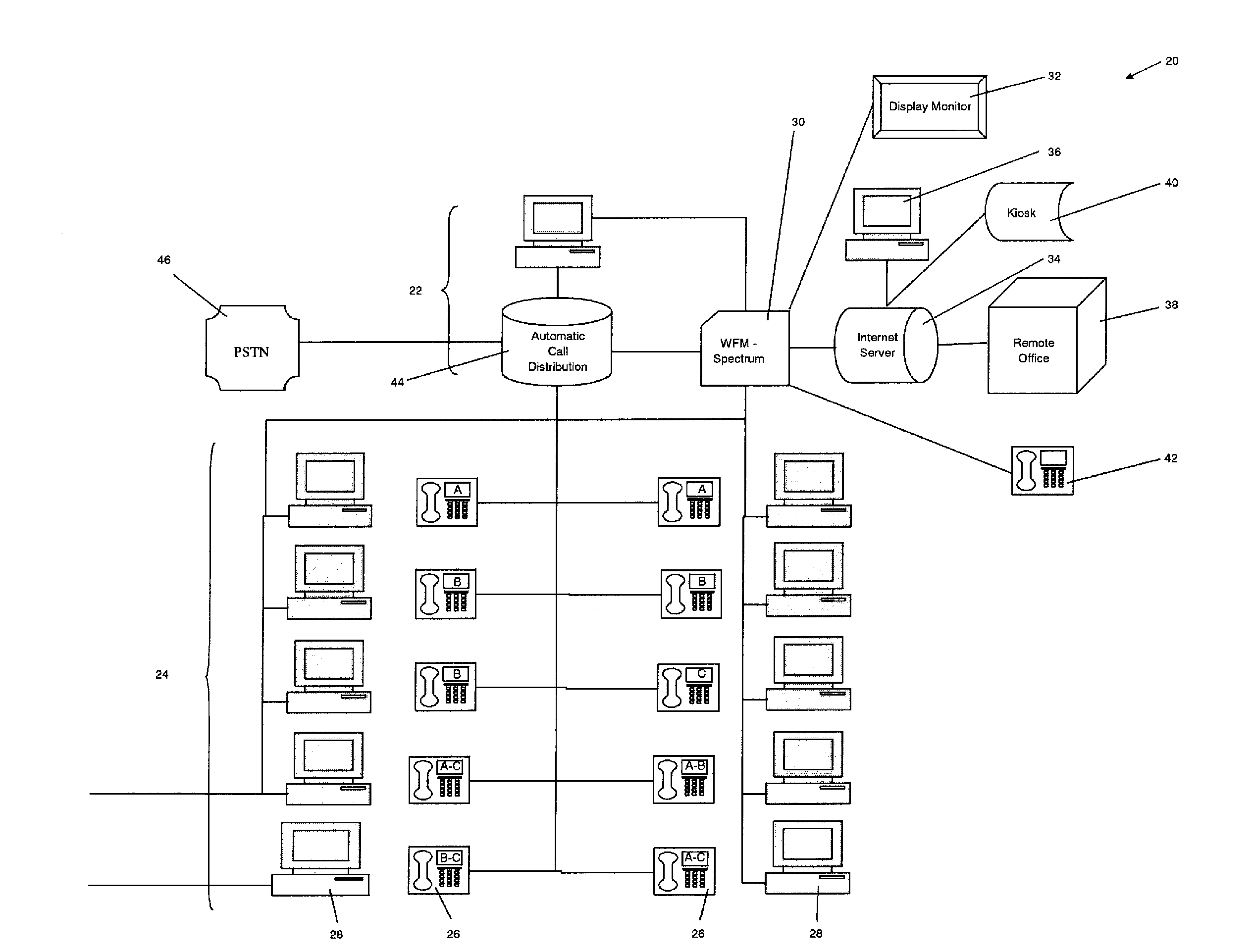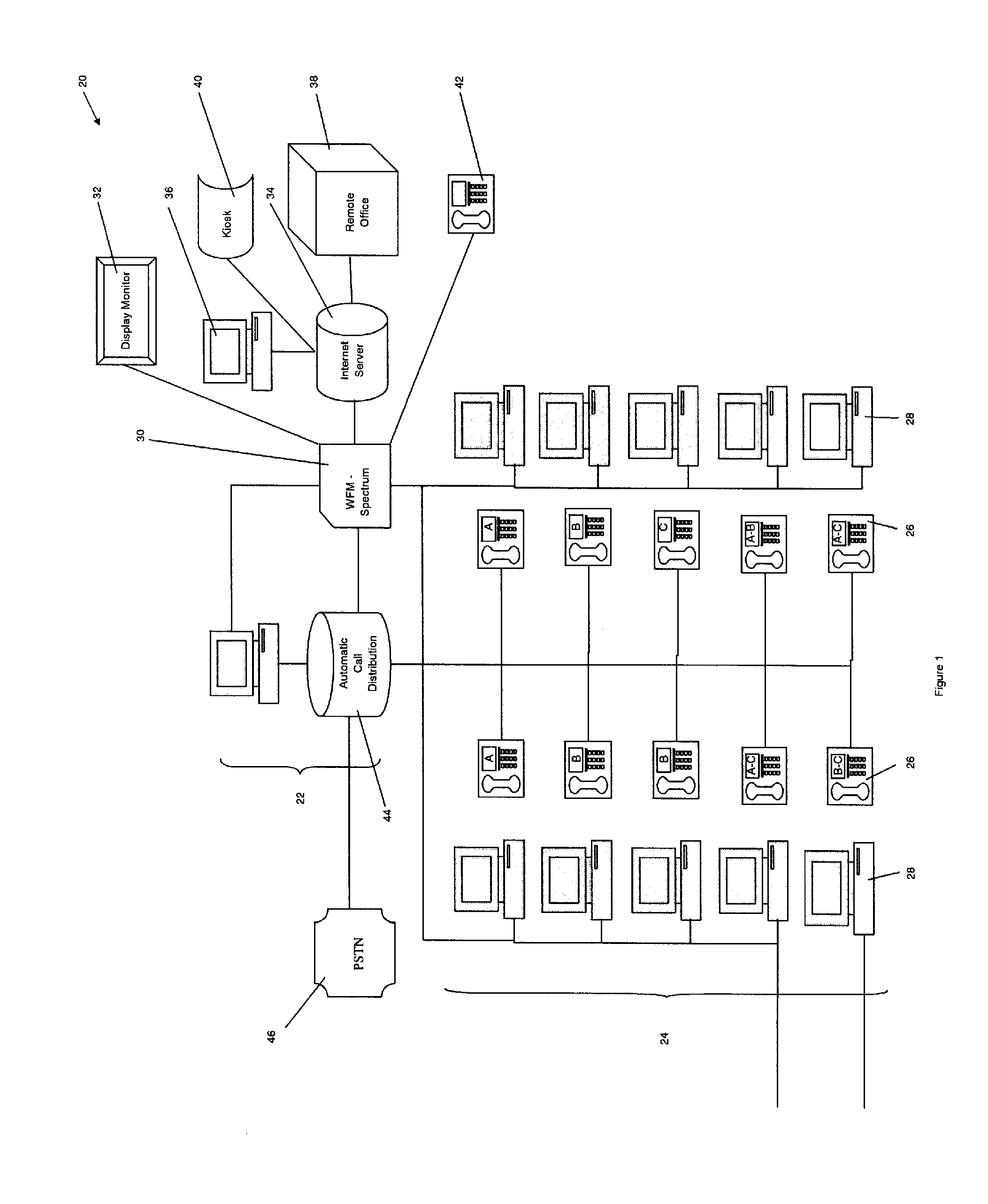Maintaining a work schedule
a work schedule and maintenance technology, applied in the field of employee management tools, can solve the problems of difficult to predict the number of employees required to adequately staff a particular shift, complex scheduling of employees, and complex management and scheduling tasks of a large employee workforce, and achieve the effect of facilitating storage, distribution and modification of agent schedules
- Summary
- Abstract
- Description
- Claims
- Application Information
AI Technical Summary
Benefits of technology
Problems solved by technology
Method used
Image
Examples
Embodiment Construction
[0047]The present invention provides improved systems and methods for staffing, scheduling, and managing a plurality of agents. In one embodiment, the system includes at least one computer configured with software to receive work force requirement data and create schedules based on the work force requirement data using any of many various scheduling algorithms. Hence, based on input regarding previous work force requirements or anticipated work force requirements, the scheduling system creates work force requirements and offers uptime and downtime adjustments to satisfy those requirements.
[0048]Although other applications are possible, one example environment 20 in which the subject invention can be implemented is shown in FIG. 1. As shown, one example environment comprises a large office building or office complex having management offices 22 and an agent work area 24. In this example environment the agent work area comprises the floor of a telephone services operation 26, such as ...
PUM
 Login to View More
Login to View More Abstract
Description
Claims
Application Information
 Login to View More
Login to View More - R&D
- Intellectual Property
- Life Sciences
- Materials
- Tech Scout
- Unparalleled Data Quality
- Higher Quality Content
- 60% Fewer Hallucinations
Browse by: Latest US Patents, China's latest patents, Technical Efficacy Thesaurus, Application Domain, Technology Topic, Popular Technical Reports.
© 2025 PatSnap. All rights reserved.Legal|Privacy policy|Modern Slavery Act Transparency Statement|Sitemap|About US| Contact US: help@patsnap.com



